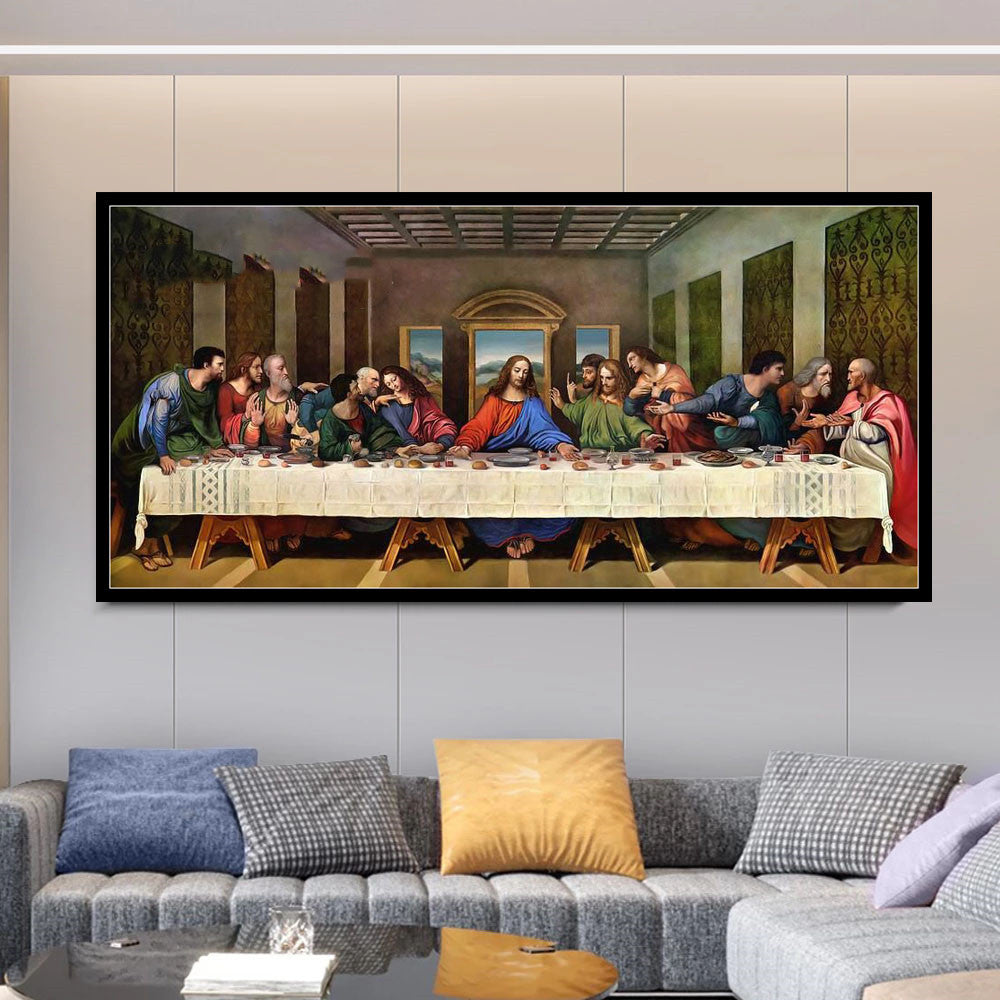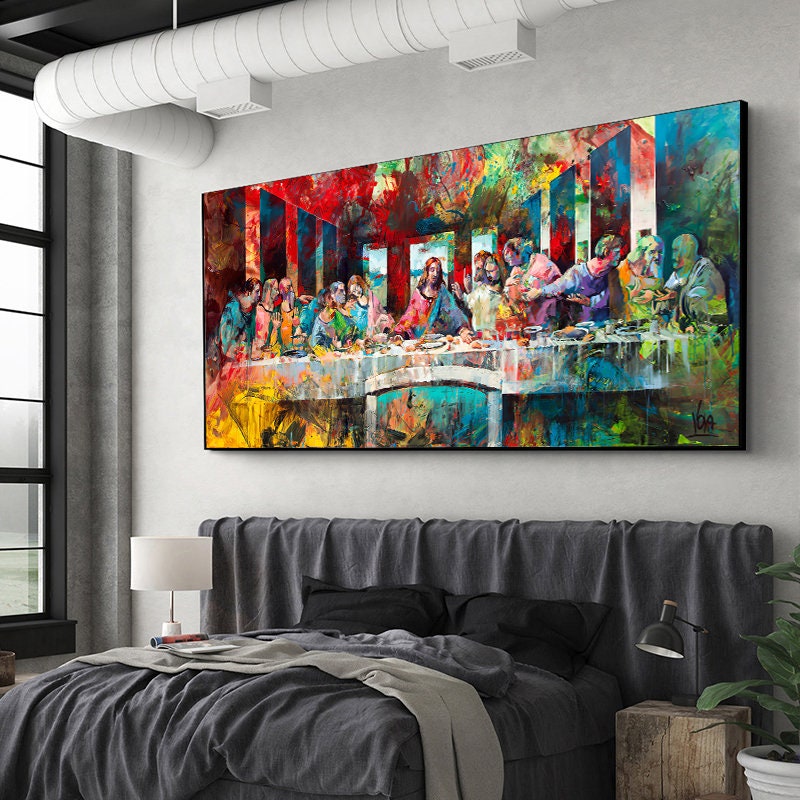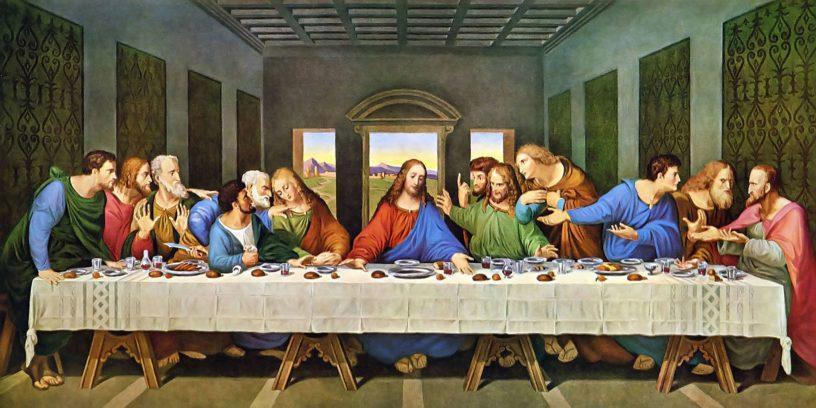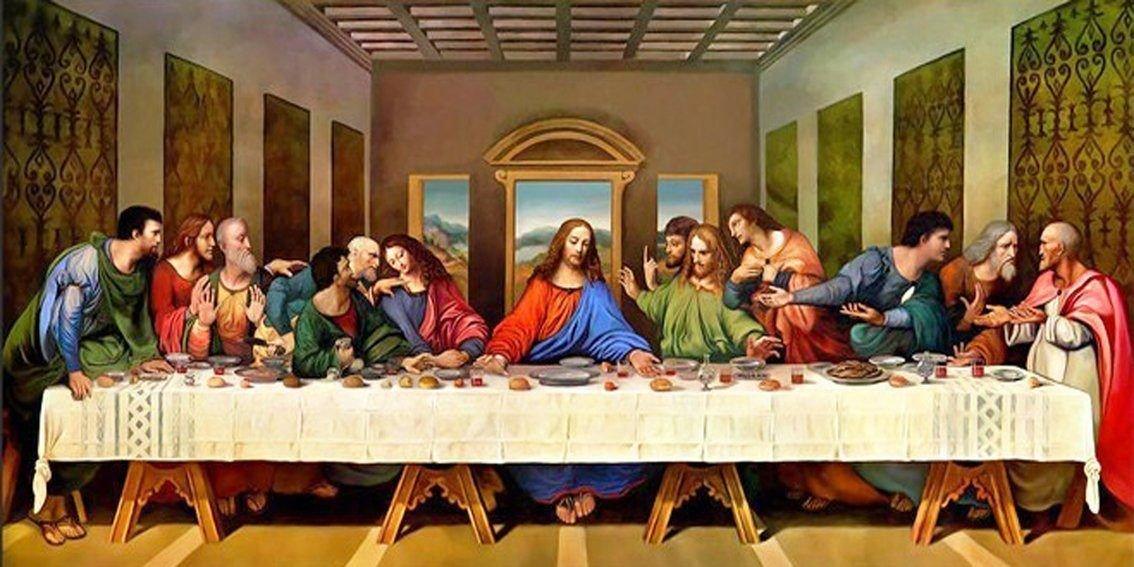Description
The Last Supper is undoubtedly the most famous painting of Jesus Christ.
The scene recreates the last Easter supper between Jesus and his apostles, based on the story described in the Gospel of John, chapter 13. Leonardo Da Vinci imagined, and has managed to express, the desire that entered the minds of the apostles for know who is betraying his Master.
The work was painted at the end of the 15th century as a mural on the walls of the refectory of the Convent of Santa Maria delle Grazie in Milan.
Fresco paintings are usually created by applying pigment over intonaco, or a thin layer of wet lime plaster. This is normally the best technique to use as it allows the cool to take care of the natural respiration or sweating that a wall does as moisture moves up to the surface.
However, in The Last Supper da Vinci decides to use oil paint as this material dries much slower and would allow him to work on the image in a much slower and more detailed manner.
Leonardo knew that the natural moisture that permeates through most stone-walled buildings would have to be sealed if he used oil paints, or it would ruin his work.
The artist added a double layer of plaster, putty, and pitch to combat deterioration.
However the artwork has had to be restored many times in its long history. Very little of the initial top layer of the oil paint remains as a result of deliberate and environmental damage.
An interesting feature of The Last Supper is the way the artist uses perspective and lighting to create depth and realism in the scene. The painting presents a view of the table from a point of view in which the viewer appears to be sitting at the table, in the place of Jesus. This technique of perspective, called central perspective, was innovative for the time and has been widely studied and admired for its dramatic effect on painting.
Also, the lighting of the painting is remarkable. Leonardo used a technique called "chiaroscuro," which is the application of strong contrasts of light and shadow to create a three-dimensional effect in the scene. The light that enters from the window behind Jesus illuminates the characters in such a way that their facial features and gestures stand out, contributing to the dramatic intensity of the scene.
Another interesting detail is the representation of the hands of the characters. Leonardo da Vinci took a keen interest in the anatomy and physiology of the human body, and this is reflected in his meticulous attention to the depiction of the hands in painting. Each character has a different position and gesture at the table, resulting in a variety of expressions and attitudes that are conveyed through the hands.
The Last Supper is a masterpiece by Leonardo da Vinci that combines the technique of central perspective, chiaroscuro, and attention to anatomical detail to create a dramatic and moving scene of Jesus' last supper with his disciples.
The Last Supper is ranked no. 33 on the list of famous paintings










